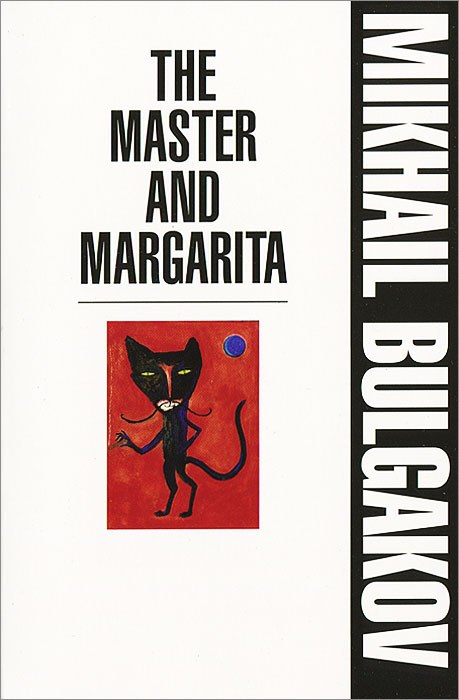ISBN: 9780330543934
Date read: 07/06/2021
How strongly I recommend it: 9/10
Support your local bookshop by going to Bookshop.org to buy your copy (instead of THAT online shopping website…)
‘Follow me, reader! Who ever told you there is no such thing in the world as real, true, everlasting love? May the liar have his despicable tongue cut out!
Follow me, my reader, and only me, and I’ll show you that kind of love!’[1]
The devil went down to Moscow. Well, the devil, disguised as a magician, and his three mates; a red-headed man with a huge fang, a self-proclaimed ex-choirmaster, dressed as a jockey, and a giant talking cat with a mustache. The Master and Margarita is somehow both magical and realistic in its execution, with its central demonic quartet wreaking havoc in a realistic historical portrayal of the Soviet Union in the 1930s. Much like another famous example of a similar genre, Gabriel García Márquez’s One Hundred Years of Solitude, the novel is hugely political in the themes that it addresses and challenges, most clearly in the novel’s setting, with the actual devil himself visiting the then officially atheistic Soviet Union. So masterfully told is the tale, however, that this book can be read regardless of its historical and political allusions, references and subtext. The Master and Margarita can be enjoyed by everyone.
It all starts with a strange encounter between two literary types, a poet and a magazine editor, who are approached by a strange foreigner after overhearing their conversation regarding the non-existence of Jesus Christ and, to a greater extent, God. When the men bring up Kant’s Proof as an example of a piece of evidence that confirms this, while contesting that Kant should be locked up in prison for its poor quality, the foreigner’s response is:
“Precisely so, precisely so,”… “That’s the very place for him! As I told him that time at breakfast, ‘As you please, professor, but you’ve contrived something totally absurd! True, it may be clever, but it’s totally incomprehensible. People will laugh at you.’”[2]
So begins a novel’s worth of clues, hints and allusions to who this magician, who goes by the name Professor Woland, really is. I won’t give away any more of the encounters Woland and his entourage engage in with the residents of Moscow, much to their dismay, except to say that before the book’s close, you will see them finagle their way into, and take over, a dead man’s apartment, perform a diabolical magic show (with disastrous results for all in attendance) and host the fanciest shindig in existence, Satan’s Grand Ball, where everyone who is (or in this case, was) anyone in the Nine Circles shows up to schmooze and party down.
One of the most enchanting things about the novel is its cast of characters. Early on we are introduced to Ivan Nikolaevich Ponyrev, a young poet who, after vocalizing his beliefs regarding Woland and his retinue’s true nature, is thrown into an insane asylum where he meets The Master, a failed author who has burned his life’s work, a novel about Pontius Pilate, and been separated from the love of his life, Margarita Nikolayevna. He is a fantastic portrait of presumably one of the many, many sane men in the asylums of the Soviet Union, as well as an autobiographical figure for Bulgakov.
Then there is Margarita herself, who is presented as a strong woman who not only defies social norms and the trappings of her boring, everyday life, but also gravity, in a memorable scene where she takes flight over the city of Moscow, before attending Satan’s Grand Ball. I also particularly appreciated Bulgakov’s portrayal of The Devil and his minions as not necessarily evil, but rather as mischievous rock stars; agents of chaos who are on the job, seeking to disrupt the rules and regulations of Russian society of the time and punish the wicked.
The book also features one of the best stories-within-a-story I have come across in literature, which is presented as the unpublished, burned manuscript written by The Master concerning Pontius Pilate’s encounter with Christ, a man who he secretly respects, who is referred to in the novel as Yeshua Ha-Notsri, the Hebrew version of his name, of which Bulgakov has chosen to make his name the only one. Bulgakov’s decision regarding the various Biblical names that appear here is a masterful one, making the familiar unfamiliar, while at the same time managing to make the world of Pilate feel even more realistic; as Jerusalem was a polyglot city at the time of Christ, ‘Hellenized Jews spoke Greek, the locals spoke Aramaic, and the Roman rulers spoke Latin) the mixing of languages is justified, even within one conversation,’[3] so the scenes that flashback to Biblical times feel as though they are documented accounts of Pilate’s experiences and not just scenes from The Master’s novel. Further to this, there are no displays of Jesus’s divinity. Bulgakov chooses to present us not with Christ the messiah, performing feats of magic like that of Woland, but simply with a man who believes in the goodness of humankind and is executed in one of the most painful and horrific ways possible.
The Master and Margarita is a very special book, one that defies categorization. It is a historical novel and a fairy tale. It is Modernist in its approach, laced with irony and moral ambiguity, but at the same time overflowing with heart and genuine affection for romance and the happiness of its characters. It is cold and it is warm. It is brilliant.
[1] Mikhail Bulgakov, The Master and Margarita (London: Picador, 2010) p. 186
[2] Ibid, p. 8
[3] Ibid, p. 340
